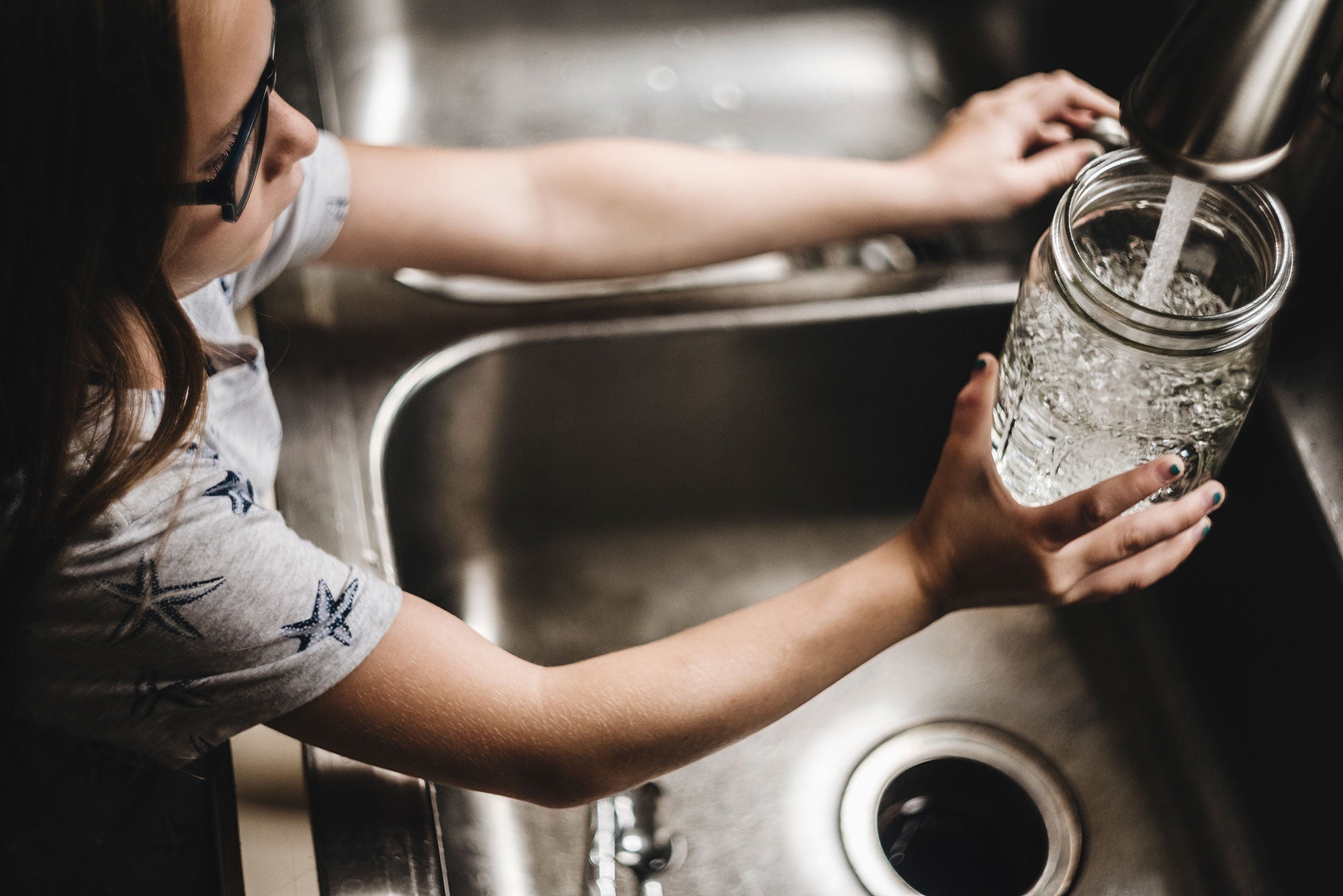Updated EPA Rule Requires Replacement of Lead Service Lines in 10 Years
Victory
—Lead and Copper Rule improvements are a critical tool for safeguarding our drinking water
Contact
Today, the Environmental Protection Agency (EPA) unveiled the final Lead and Copper Rule Improvements rule (LCRI), a long-overdue measure that makes significant changes to the Safe Drinking Water Act rule aimed at reducing lead contamination of drinking water. This new rule requires the proactive replacement of most lead service lines nationwide within the next 10 years, improves sampling methods to more accurately measure lead levels, and lowers the “lead action level,” which will force more water systems to take immediate action to address lead contamination. The new rule also requires water systems to provide consumers with filters when high lead levels are repeatedly detected.
The EPA is making these necessary changes on the heels of Congress’ Bipartisan Infrastructure Law, which set aside $15 billion dollars for lead service line removal. This country has the means, and the Biden administration has now shown the will, to stop drinking water from being delivered though service lines made of lead, a highly toxic contaminant that leaches into the water. There are still as many as 10 million lead service lines in the country, delivering drinking water to an estimated 22 million people.
“Lead contamination is a longstanding public health emergency, and the Biden-Harris administration’s rule is a monumental step forward in addressing the urgent need for safe, clean drinking water,” said Earthjustice Vice President of Litigation for Healthy Communities Patrice Simms. “Moving forward, water utilities, regulators, and legislators must work together to build off this rule and fulfill the administration’s vision for complete removal of all lead service lines in 10 years. Every day that lead pipes remain in the ground is a day our children’s futures are at risk. And this removal must be equitable — many families have paid with their health, and those families should not also be required to pay for the country to address this public health problem.”
The Center for Disease Control and EPA agree: no level of lead is safe. Even trace amounts of lead cause irreversible damage to children’s developing brain, cognitive impairment, and behavioral issues. Exposure to lead is also correlated with significant risks to cardiovascular health. Congress knew the danger lead exposure presents when they banned installation of lead service lines in 1986, and when the Lead and Copper Rule came into effect in 1991. But there has been no meaningful improvement in protecting communities under the Lead Copper Rule for over 30 years until now.
The next steps needed to effectively and equitably protect people from lead in drinking water include:
- Ensuring that individual homeowners are not forced to pay for removal of lines installed long ago, often at the behest or requirement of cities and water systems.
- Distributing comprehensive and scientifically accurate information about lead in drinking water so that families can take appropriate steps to protect themselves.
- Guaranteeing that lead service line removal is full and complete, and all lead-bearing elements of service lines are removed.
- Enacting strong, proactive regulations that eliminate lead in drinking water at schools and childcare facilities, where children spend most of their day.
This rule comes in response to successful lawsuits by Earthjustice and others, as well as grassroots pressure from frontline communities. In 2021, EPA released flawed amendments to the LCR that dramatically slowed down the required replacement rate of lead pipes. In response, Earthjustice sued on behalf of the Newburgh Clean Water Project, United Parents Against Lead, the NAACP, and the Sierra Club. Additional lawsuits were filed by the Natural Resources Defense Council and 10 attorneys general, representing nine states and the District of Columbia.
Quotes from our clients:
“Today, we are celebrating the announcement of EPA’s long-awaited final rule intended to ensure lead-free water for our communities. However, we continue to mourn for those whose lives have been irrevocably harmed from decades of exposure to lead,” said Tamsin Hollo, Steering Committee Member of the Newburgh Clean Water Project. “We may never fully grasp the toxic legacy of lead in our communities, yet we’re hopeful that this important rule update will protect all in our community equally, and provide a path to a better, more equitable future for our bright young generations moving forward.”
“Lead has poisoned our children and communities for far too long, and this rule is a long-overdue response to a national crisis,” said Queen Zakia Shabazz, founder and executive director of United Parents Against Lead & Other Environmental Hazards. “The full removal of lead pipes will bring real relief to families who have lived with the threat of contaminated water for generations. Now we need swift and thorough implementation, so far fewer children suffer the irreversible harms of lead exposure.”
“Addressing lead contamination in our drinking water is fundamental to ensuring the well-being of our communities and safeguarding our natural resources,” said Melinda Pierce, Sierra Club’s Legislative Director. “The Lead and Copper Rule Improvements rule represents an important step forward in protecting public health, particularly for the most vulnerable. By requiring the removal of most lead service lines and mandating quicker action, the EPA is finally addressing a critical threat to the health of millions, particularly children and communities of color.”

Additional Resources
About Earthjustice
Earthjustice is the premier nonprofit environmental law organization. We wield the power of law and the strength of partnership to protect people's health, to preserve magnificent places and wildlife, to advance clean energy, and to combat climate change. We are here because the earth needs a good lawyer.